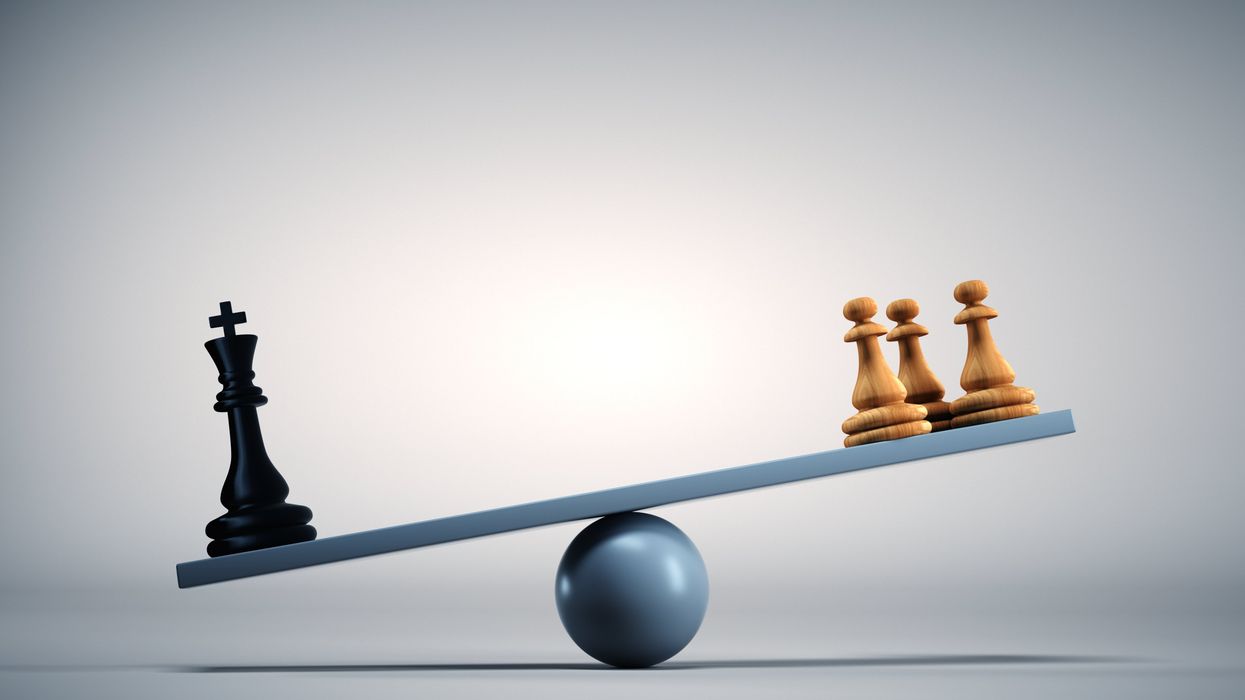Frazier is an assistant professor at the Crump College of Law at St. Thomas University. Starting this summer, he will serve as a Tarbell fellow.
Political inequality, like mold in that one corner of the shower, seemingly comes back stronger after every new attempt to remove it. That’s precisely why the Founders wanted politics to operate exclusively within our republican system. They anticipated that the creation of additional processes and procedures outside the established political order would give an upper hand to those with more resources, more time,and more extreme views. In other words, they understood the participation paradox: Efforts to increase political equality by expanding the means of participation may actually exacerbate political inequality.
The multifaceted dimensions of political inequality — specifically, income and educational disparities, and the subsequent representational gaps — together cement a de facto oligarchy. The constitutional framers were acutely aware of the potential perils embedded within democratic structures and thus, paradoxically, sought to restrict rather than expand political participation as a safeguard against the undue influence of a privileged few.
The roots of political inequality can primarily be traced to entrenched income disparities. Differences in financial well-being leads to a disproportionate distribution of resources, with wealthier individuals possessing enhanced capabilities to influence political outcomes. These individuals not only contribute financially to political campaigns but also command the means to lobby for policies that perpetuate their economic dominance. This creates a self-reinforcing cycle where income inequality perpetuates political inequality, which in turn cements income inequality further. The disparity is not limited to monetary contributions but extends to the allocation of time; economically disadvantaged individuals, burdened by having to work longer and commute further, are starkly limited in their capacity to engage with and influence political processes.
Educational inequality further exacerbates this divide. A higher level of education correlates with a better understanding of political mechanisms and the nuances of policy issues. This disparity in knowledge not only empowers the educated with the tools to effect change but also disenfranchises those less informed, who are often left navigating a labyrinthine political landscape. The educational divide thus serves as both a barrier and a gatekeeper, determining who gets to participate in the democratic process in a meaningful way.
The culmination of these inequalities is a representational gap within the halls of power. Elected officials disproportionately hail from affluent and educated backgrounds, which skews their perspectives and priorities away from the needs and concerns of their most disadvantaged constituents. This misalignment is not trivial but a significant factor in the perpetuation of policies that fail to address, or worse, exacerbate, the conditions of the underprivileged. The result is a political class that neither mirrors the demographic makeup of the populace nor aligns with its broader interests.
The framers of the Constitution were cognizant of the dangers inherent in a pure democracy, where rapid oscillations in public sentiment could lead to instability and injustice. Their response was a system designed to filter the will of the masses through a series of institutional checks that favored deliberation over velocity and minority rights over majoritarian tyranny. The Electoral College, the Senate and judicial appointments were all contrivances aimed at tempering the direct expression of the popular will. In this light, the democratic expansions that have occurred — such as the direct election of senators or the broadening of the franchise—can be seen not just as advancements but also as potential vulnerabilities through which the affluent and the well-connected can further entrench their advantages.
Each new democratic mechanism, from the introduction of primaries to the expansion of ballot initiatives, while ostensibly designed to enhance direct democratic engagement, has been co-opted by those with the resources to dominate them. These mechanisms often introduce new actors into the political arena — super PACs, lobbyists and advocacy groups — that operate with minimal accountability to the general electorate. The unchecked influence of these actors represents a significant deviation from the democratic ideal of governance by the people, for the people.
The trajectory of American democracy illustrates that without rigorous and sustained efforts to address and ameliorate these foundational inequalities, the system is prone to being exploited by a minority. The ideal of republican governance is supplanted by a reality where a few wield disproportionate power, not through overt usurpation but through the subtle machinations of economic and educational advantages.
Only by confronting the entrenched inequalities that underpin political disparity can there be any hope of realizing the ideal of equal representation. This necessitates a robust reevaluation of the structures that permit such disparities to fester, including a critical reassessment of the role of money in politics, the equitable distribution of educational resources and the mechanisms of political representation. Such an undertaking, while daunting, is essential not only for the health of the democracy but for the integrity of its foundational promise.



















